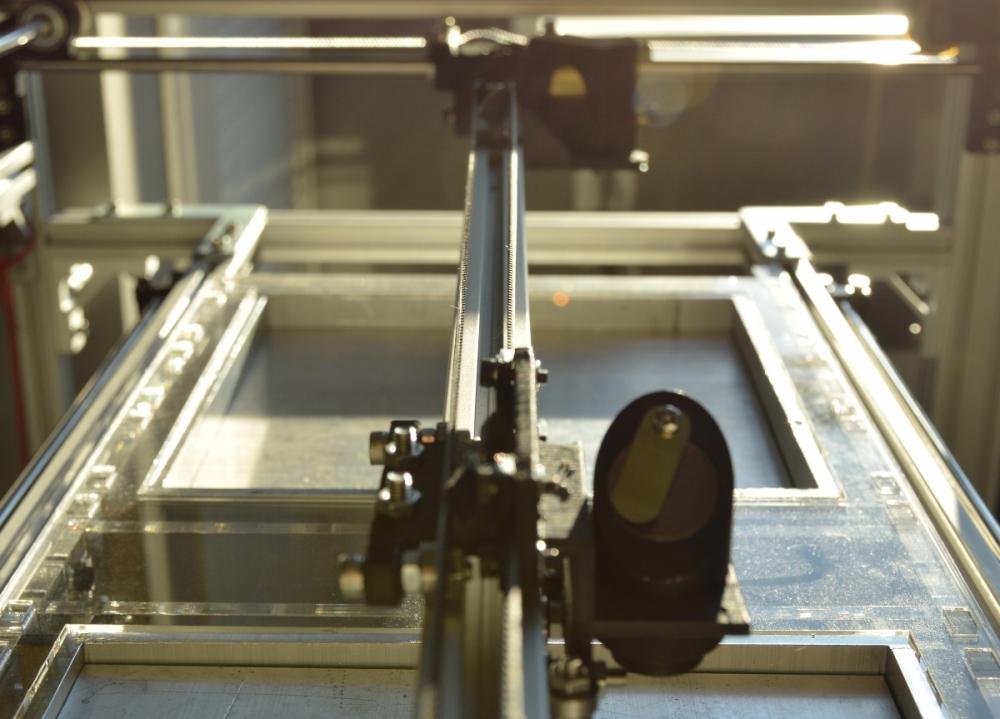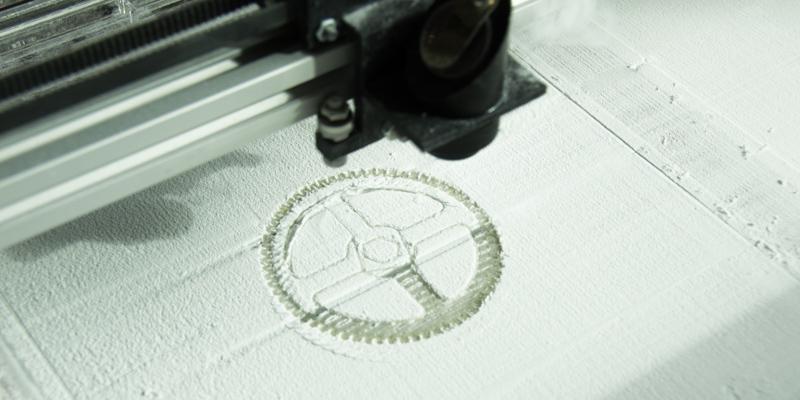
We have already begun to see several consumer-level SLS 3D printers announced in the past few months, some of which are priced at under $20,000, making it entirely feasible that one day soon, SLS machines could take the place of FFF- and SLA-based printers on the desktops of artists, designers, and hobbyists.
This month, on May 16 and 17, makers from around the world will gather in San Mateo, California for the 10th Annual Bay Area Maker Faire, bringing with them a very unique tradition and atmosphere. One of the makers who will be on hand exhibiting his creation is a man named Patrick Lie, the CEO of Polyforge, Inc. Lie, a “tech industry veteran,” has worked for both large and small companies over the years. These range from small startups to Fortune 500 companies like Microsoft. When it comes to running a successful company, he certainly has the resume to back it up.
What Lie and Polyforge Inc. plan to unveil at Maker Faire is a brand new SLS 3D printer, also called the Polyforge. Unlike most other SLS 3D printers on the market though, the Polyforge isn’t targeting large corporations, but is instead focused on bringing SLS 3D printers to the masses.
“I’ve been fascinated by 3D printing for a very long time, buying in the promise of easy manufacturing, literally and figuratively,” Lie tells 3DPrint.com. “I got started with early MakerBots, building RepRaps and then designing and building my own extrusion 3D Printers — which I used to prototype parts for the Polyforge printer. When I learned about SLS printers and their advantages over existing printers, I got very excited! No more worrying about overhangs or removing support material, fully solid prints and anything with lasers is just cool. That excitement faded when I learned how much they cost ($200k+), but I quickly saw this as an opportunity to create an affordable SLS printer and bring that power to small businesses.”
Lie saw so much potential in creating an affordable SLS 3D printer that he quit his job as an engineering manager to focus solely on designing, prototyping, and ultimately bringing the Polyforge 3D printer to market. The printer, which uses a laser to selectively sinter (melt) nylon powder, is quite the capable machine in many aspects. Below you can find some of the general specifications that it will include:
- Printing speeds of 120+ mm/s
- Layer height of 0.1 mm, depending on material used
- Smallest feature size of 0.3 mm
- Build volume of 195 x 195 x 195 mm
- 20 Watt CO2 laser
Lie tells us that he is currently planning to launch an Indiegogo campaign for the printer sometime this summer. The pricing for the machine has not yet been set, but he tells us that it will be priced similar to “mid-range laser cutters, such as Trotec and Epilog machines”. This translates into a price tag somewhere between $10,000 and $20,000. With this said, Lie also expects to offer about a 50% discount on his Indiegogo units.
“The printer has safety mechanisms to prevent the laser from firing while the lid is open or if the cooling system isn’t functioning,” Lie tells us. “Nylon and its fumes are non-toxic, however proper ventilation is still recommended. Basically I would recommend people follow precautions similar to those when using laser cutters.”
Those precautions are as follows:
- Ensure adequate ventilation.
- Don’t run the printer unattended.
- Have a fire extinguisher nearby.
The Polyforge utilizes a CO2 laser which provides for the option to use a large variety of materials for fabrication of printed objects. Lie will undoubtedly provide a list of recommended materials, but surely people will be tempted to try their own. In this case, Lie highly suggests that they verify the safety of these materials prior to using them in his printer.
It should be interesting to see how quickly SLS 3D printers begin coming to market, and how soon, if ever, we start seeing them take the place of FFF- and SLA-based 3D printers for use within small businesses and at home. What do you think? Will the Polyforge 3D printer be something you would consider purchasing? Discuss in the Polyforge SLS Printer forum thread on 3DPB.com.
